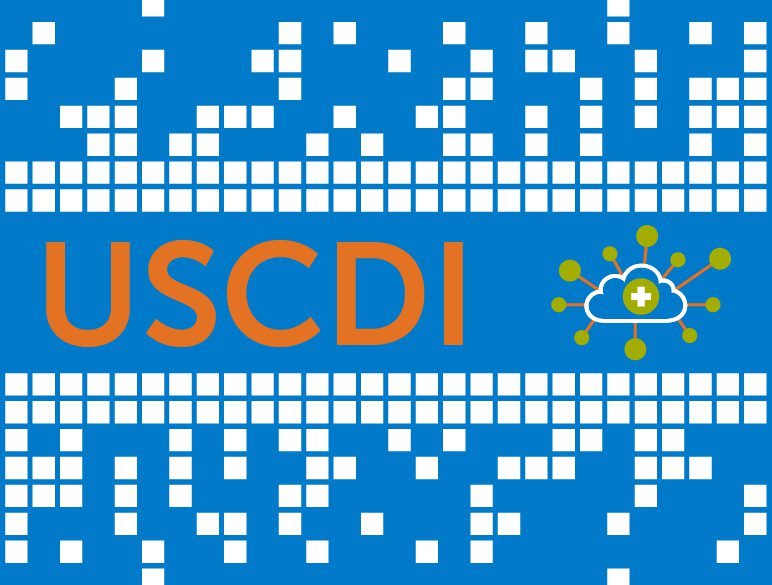
Written by David Navarro, Senior Director of Data Science, Harmony Healthcare IT
What is the USCDI?
United States Core Data for Interoperability (USCDI) is a standardized set of health data classes (categories) and constituent data elements for interoperable health information exchange. USCDI serves as a minimum guide for provider organizations on what data classes and elements will be stored and made interoperable, prescribing specific concepts like LOINC, SNOMED, CPT, and ICD10 that should be utilized to store patient observations.
The Office of the National Coordinator (ONC) adopted USCDI as the content standard for 21st Century Cures Act. The latest version of USCDI (v5) was released in July 2024. USCDI v5 is the latest iteration of the standardized set of health data classes and elements with a goal to facilitate nationwide, interoperable health information exchange. This version includes 16 new data elements and two data classes that seek to:
- Improve patient care
- Promote health equity
- Reduce disparities
- Support underserved communities
- Enable public health data exchange
For more information on the final USCDI (v5) guidance, check out the most recent ONC Standards Bulletin.
How is the USCDI updated?
The USCDI is constantly under review. In fact, the ONC has a process for health IT stakeholders to follow to suggest updates. This can mean the addition of new data classes, like those listed above, or data elements that could be added to an existing class.
The process to suggest an update includes submitting new data elements and classes to the USCDI ONDEC (ONC New Data Element and Class) Submission System.
The submission for a proposed change should include:
- Use case information
- Applicable standards and technical specifications
- Existing industry use and exchange
- Potential challenges of incorporating proposed data elements
Then, the ONC evaluates the proposed data elements and assigns them one of the following levels:
- Comment– Data may not have a well-defined use case or value to potential users
- Level 1– Limited existing use in electronic systems, limited exchange between systems
- Level 2– Extensive existing use in systems, and exchange between systems, would improve nationwide interoperability
Next, the ONC publishes data elements to the USCDI page for comments by health IT stakeholders. Updates and comments can be made for consideration of moving proposed data elements into the next version of the USCDI standard. Submissions achieving Level 2 will then be considered for incorporation into the new USCDI version of the standard.
While there may be a long list of suggested updates, the ONC is taking a judicious approach about how much to add to subsequent USCDI versions because of the USCDI’s broad applicability to certified healthcare technology, interoperability transactions, and its potential effect on user experience and workflow.
How are new versions of the USCDI incorporated into initiatives such as the 21st Century Cures Act?
To date, version 3 is required to meet the Cures Act requirements. However, USCDI Version 4 (v4) has been proposed as the new required version in the Health Data, Technology and Interoperability (HTI-2) proposed rule, with an effective date of January 1, 2028 for adoption.
To address the emergence of new standard versions, the ONC has established a voluntary Standards Version Advancement Process (SVAP). The SVAP enables health IT developers to incorporate newer versions of the standards and implementation specifications as part of the “Real World Testing” Condition and Maintenance of Certification requirement of the Cures Act. This means that using SVAP, certified health IT developers are permitted to use a more advanced version of the USCDI standards than currently in widespread use.
The impact of USCDI is not limited to just health IT products certified under the ONC Health IT Certification Program.
The USCDI also is used to align interoperability requirements and national priorities for health IT and health care broadly across industry initiatives. In fact, CMS and other federal, state, local, and tribal partners reference the USCDI for a range of health information exchange purposes.
Get organized and ready to move forward with Cures Act requirements and best practices.
It is important that organizations understand all the provisions detailed in the 21st Century Cures Act and apply the broad regulations to their specific interoperability use cases. All data, current and legacy, should be interoperable to ensure quality patient care and to support efficient clinical workflows.
Legacy data plays an important role in the safety and care of patients. Harmony Healthcare IT is committed to ensuring our legacy data solutions align with interoperability practices defined in the 21st Century Cures Act.
If you’re ready to get started on talking about your health data and the need for interoperability, contact me or my team. As a data management firm that moves and stores patient, employee, and business records for healthcare organizations, Harmony Healthcare IT is up to date on interoperability strategies, and ready to help you develop your plans.
For other blogs related to interoperability and the 21st Century Cures Act, check out:
21st Century Cures Act – Information Blocking & Rule Summary
The 2022 ONC Annual Meeting Recap
Understanding TEFCA and its Role in National Interoperability
21st Century Cures Act and the Push for REST API Adoption
 As Senior Director of Data Science at Harmony Healthcare IT, David Navarro drives interoperability initiatives and focuses on the curation and accessibility of data in the healthcare ecosystem.
As Senior Director of Data Science at Harmony Healthcare IT, David Navarro drives interoperability initiatives and focuses on the curation and accessibility of data in the healthcare ecosystem.






